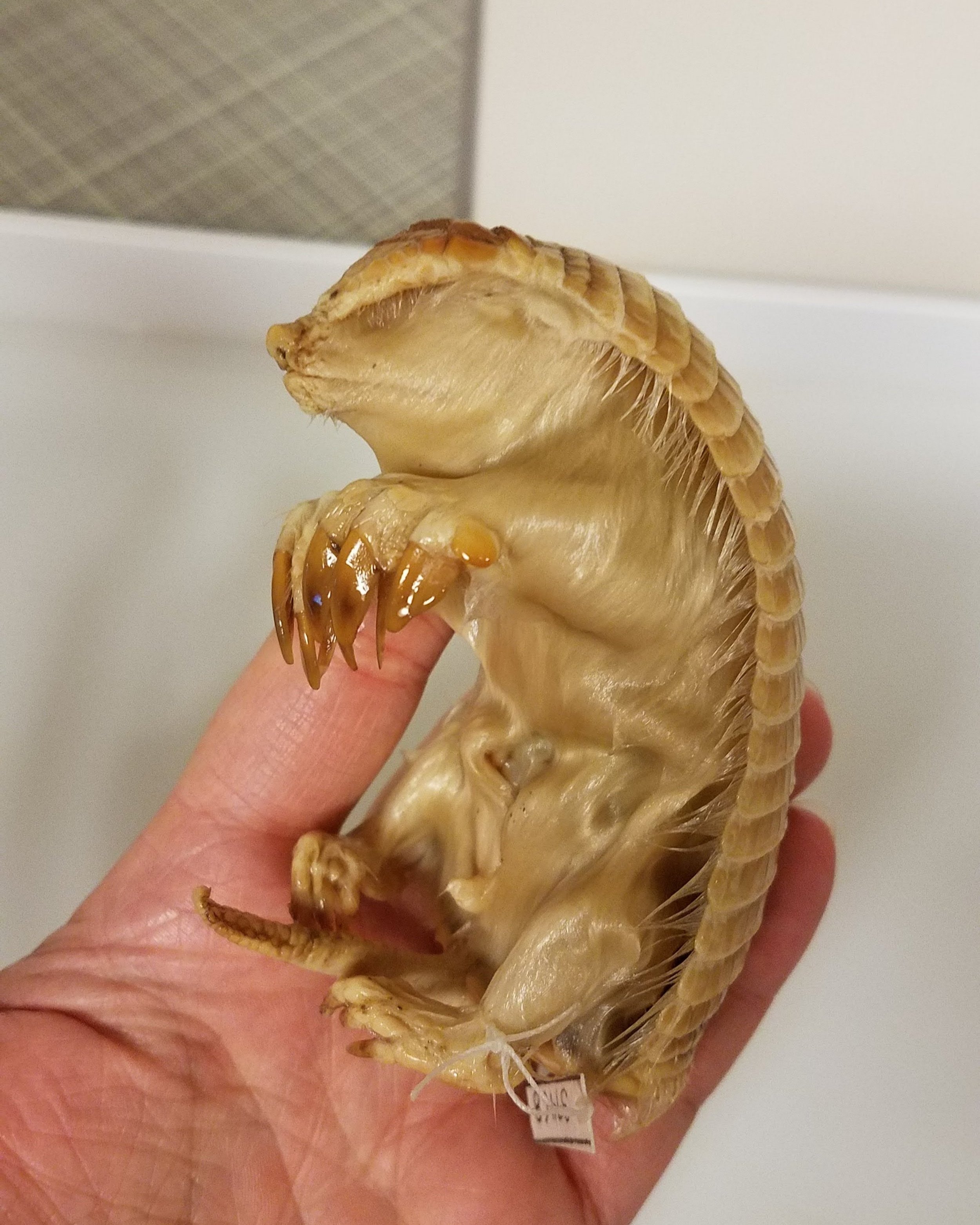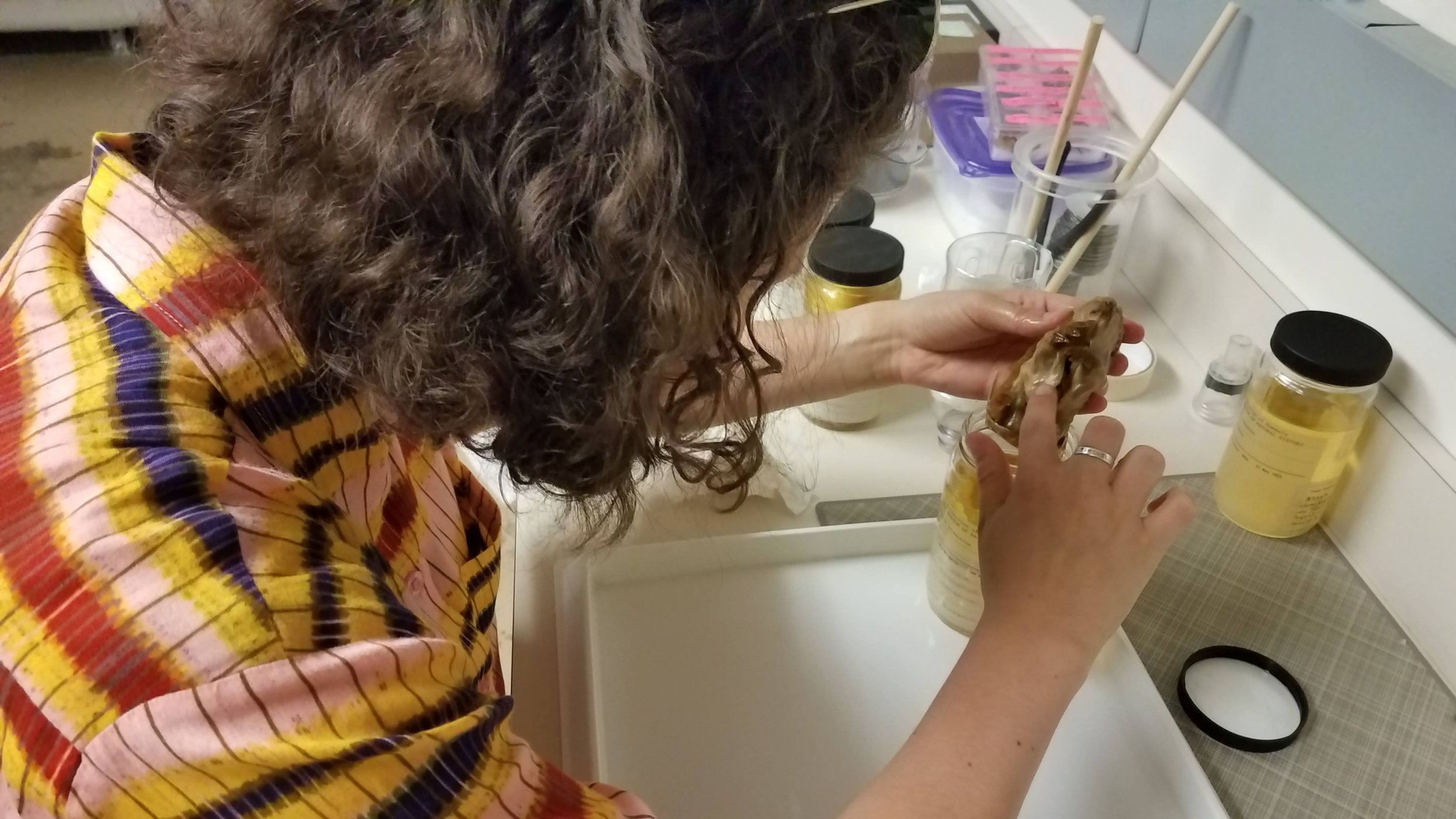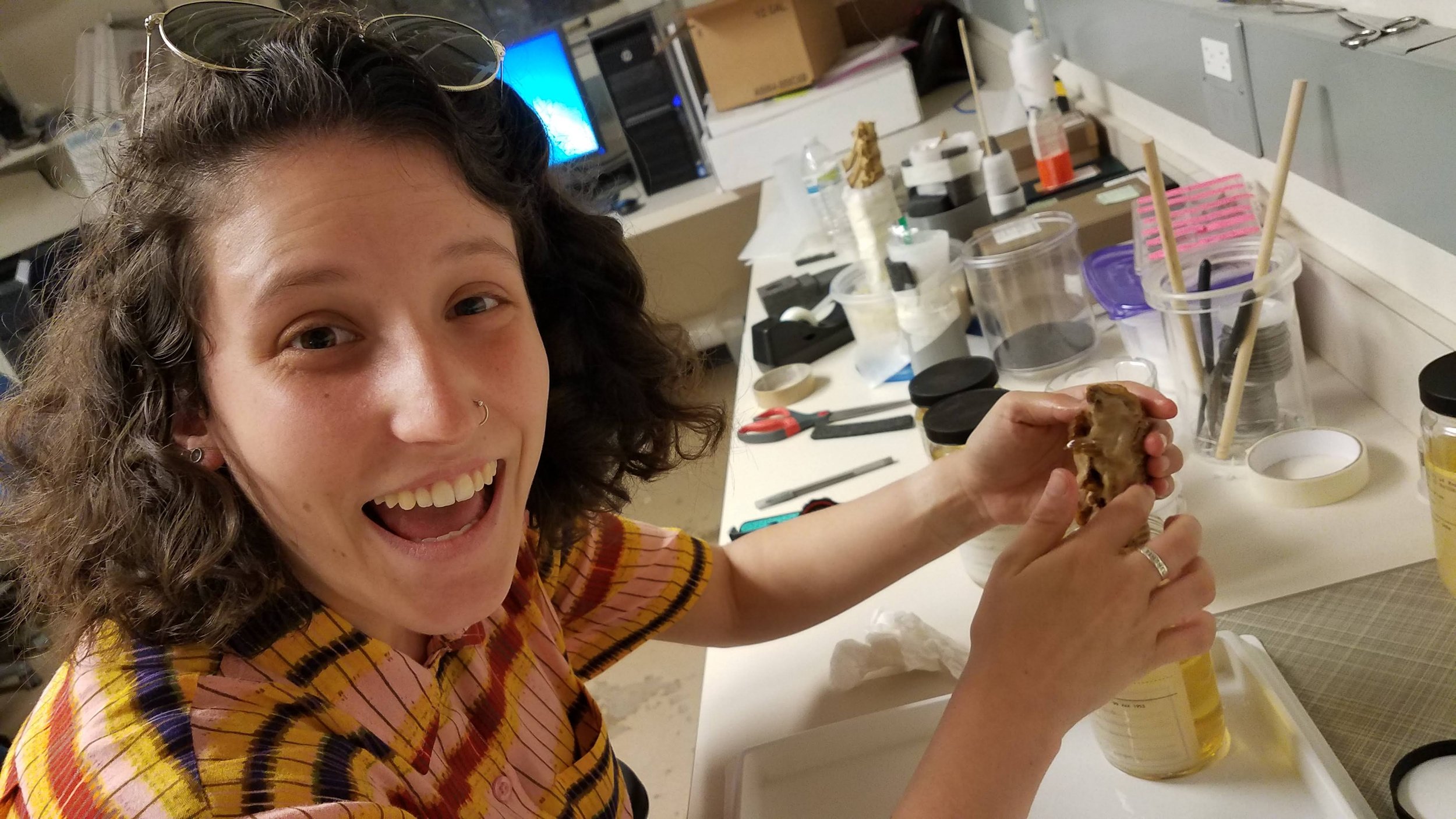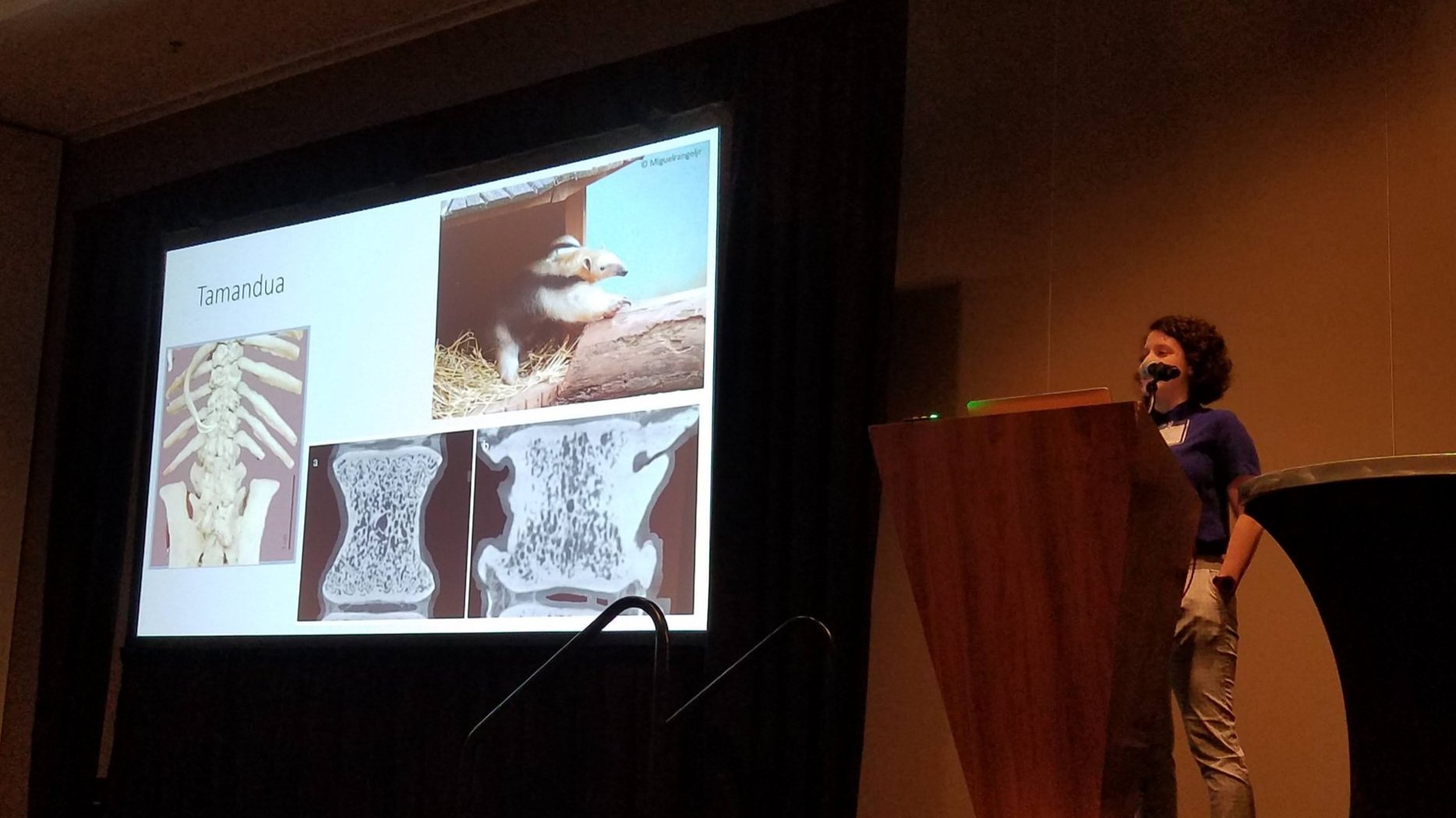Zoo versus wild: how does captivity affect the skeleton?
Zack, Smith, and Angielczyk, 2021. Highlighting differences between captive and wild specimens in bone morphology of two species of anteaters. (a) Bone volume fraction of Myrmecophaga and Tamandua specimens. CT slices are example captive or wild vertebra (dorsal to top). Each line represents a single specimen. Scale bars for Myrmecophaga are 1 cm. Scale bars for Tamandua are 5 mm. (b) 3D renderings of example captive and wild Myrmecophaga vertebrae with captive specimen surrounded by a dashed box (cranial to left). Pathology on the captive vertebrae is highlighted in teal. Scale bars = 5 mm. (c) 3D renderings of example captive and wild Tamandua vertebrae with captive specimen surrounded by a dashed box (cranial to left). Pathology on the captive vertebrae is highlighted in teal. Scale bars = 4 mm. L, lumbar; T, thoracic
During my tenure as an NSF Postdoc at the Field Museum, I began a collaboration with University of Chicago undergraduate Hartrich Zack to investigate the differences in trabecular bone architecture between captive (zoo) and wild mammalian specimens. Zoo specimens in natural history collections allow researchers to inspect the morphologies of rare or CITES-listed taxa, but the lifestyles, diets, and lifespans of captive animals differ from those of their wild counterparts. Hartrich and I are working together with Ken Angielczyk (FMNH) to uncover how differences in trabecular bone architecture might reflect those differences in xenarthran mammals (sloths, anteaters, and armadillos). Results thus far show that there are differences between wild and captive populations in both gross morphology and trabecular bone characteristics, which vary by species, vertebral position, ecology, and pathology. Our findings suggest that studies linking ecology and trabecular bone morphology should be cautious about including zoo specimens.
Hartrich received approximately $7500 in funding to execute this work, and completed their undergraduate thesis on the topic in Spring 2021. They were recently admitted to the University of Chicago Ph.D. program in Biology, and received the prestigious National Science Foundation Graduate Research Fellowship to fund their new research adventure!! We are in the process of submitting a second manuscript concerning the effects of body size on xenarthran trabecular bone as well.
Zack, E.H., Smith, S.M., Angielczyk, K.D. 2023. From Fairies to Giants: untangling the effect of body size, phylogeny, and ecology on vertebral bone microstructure of Xenarthran mammals. Integrative Organismal Biology. doi: 10.1093/iob/obad002
Zack, E.H., Smith, S.M., Angielczyk, K.D. 2021. Effect of captivity on the vertebral bone microstructure of xenarthran mammals. The Anatomical Record. doi: 10.1002/ar.24817




